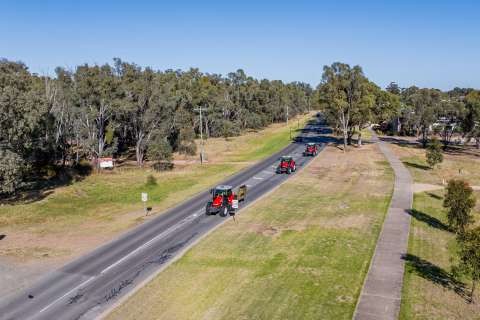The abundant black-backed gulls form large colonies and adversely impact the endangered black-fronted tern/tarapirohe, black-billed gull/tarāpuka, wrybill/ngutu pare, and banded dotterel/tūturiwhatu, which breed on Canterbury’s braided rivers.
DOC is overseeing the control programme, with the support of Environment Canterbury as part of the Hurunui Waiau Water Zone Committee’s flagship project to restore riverbed habitat and support threatened bird species.
DOC Science Advisor Kerry Weston says the work is part of a five-year control programme and follows a successful trial in the Hurunui River last year.
“This will be the first time we’ve controlled black-backed gulls in the Waiau River where we know they have established several large breeding colonies.”
DOC is hoping to reduce the population of black-backed gulls in the Waiau and Hurunui rivers by more than 80 percent over the next five years.
To measure the success of the control operations, DOC will compare the breeding success of the threatened bird species in areas where gulls are controlled with areas where they are not.
“Last year the control operation was really successful, we managed to reduce 90 percent of gulls in some locations.
Unfortunately, due to severe flooding many of the birds we were trying to protect ended up abandoning their nests but we expect more of them to nest successfully in the future.”
Zone Committee Deputy Chair Ken Hughey says Canterbury’s braided rivers, including the Hurunui and Waiau, are unique.
“They support many important fish, animals and plants. Many of the special bird species that depend on these rivers are declining,” he said. “That is why we are supporting these important control operations”.
Ecological consultancy Wildlife Management International will carry out the control work by targeting black-backed gull colonies over a 30 km section of the riverbed between the upper and lower Hurunui gorges for several weeks. They will also be working over a 70 km section of the Waiau riverbed. Control will begin in the next few weeks and may continue until the end of December. Landowners living next to the areas where gulls will be controlled have been informed and will be contacted again before operations start.
The toxin alpha-chloralose, an anaesthetic compound registered for black-backed gull control, will be mixed with margarine on bread bait and hand-laid within gull colonies. Uneaten baits and gull carcasses will be removed for disposal within 24 hours. Warning signs will be in place at entry points to the operational areas.
Alpha-chloralose bread baits and gull carcasses are toxic to domestic animals, as well as people, if eaten. People are advised to avoid the control areas while signs remain in place and not to take their pets into these areas.







